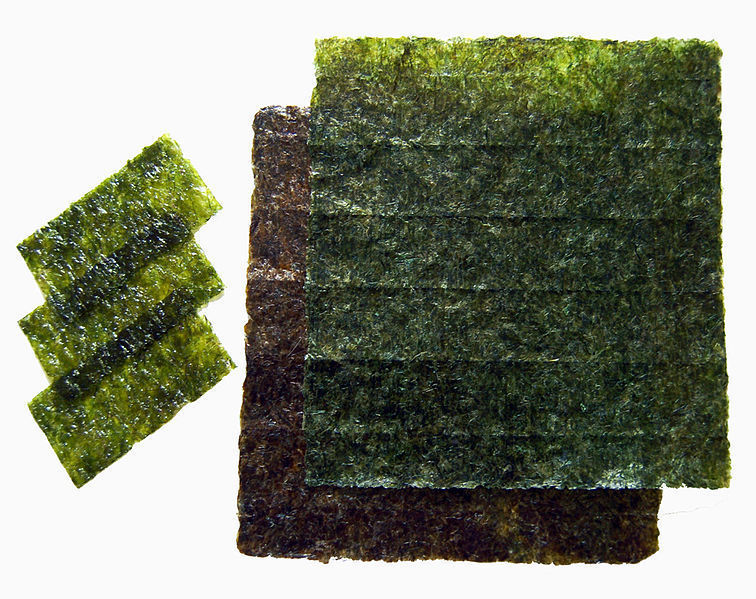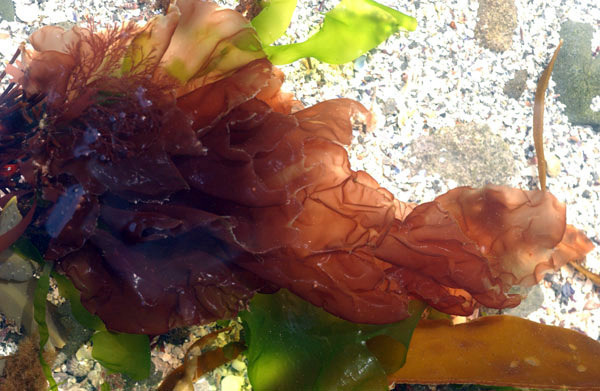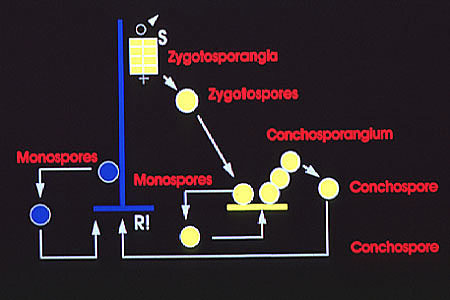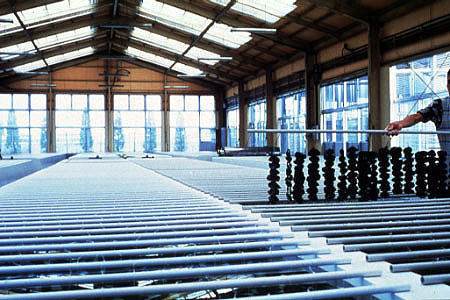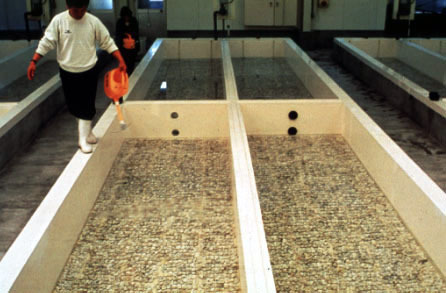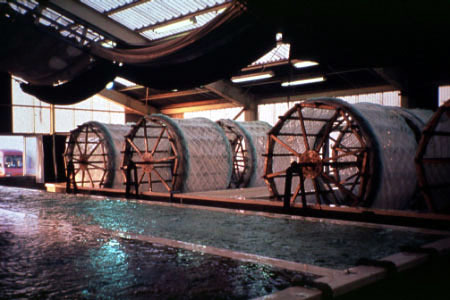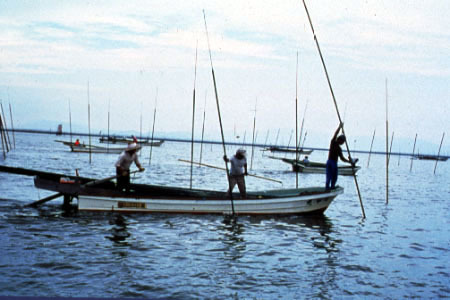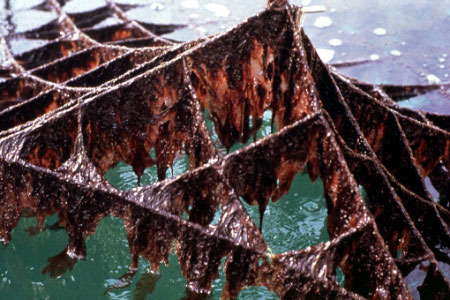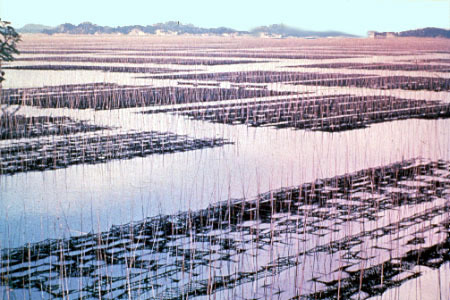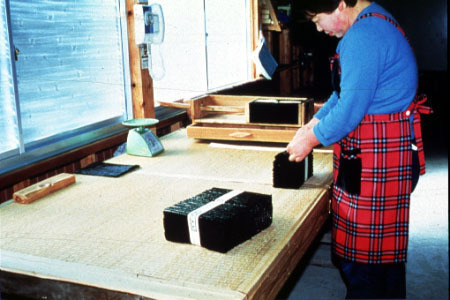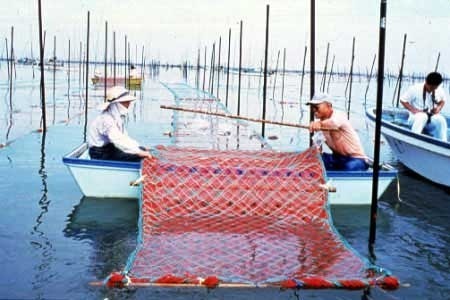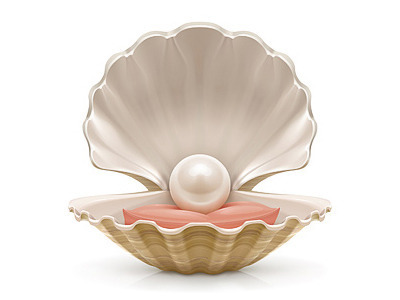2018年02月15日
Japan-automachic Sushi Restaurant-Conveyor Belt Sushi
Japan-automachic Sushi Restaurant-Conveyor Belt Sushi
Jojo in Japan [Conveyor Belt Sushi]
https://youtu.be/BbqQAQ8gnsc
Ippika
2013/12/07 に公開
Hello Everyone! Jojo here!
Right in my hometown there is the best sushi restaurant! It's called Hamazushi! It's one of my favorite カイテンズシ (kaitenzushi) or conveyor belt sushi restaurants in Japan. Why? Because it's DIRT CHEAP. Every plate of sushi is 100 yen or $1 and is very tasty! I want to share a taste of this restaurant with you.
I hope you enjoy this video.
If you have any comments or suggestions of what I should do next, please leave a not below.
Thank you for watching!
I'll see you in Nippon! ヾ(^∇^)
カテゴリ ブログ
ライセンス 標準の YouTube ライセンス
☆☆☆========================================================☆☆☆
Japanese Customer Food # 60 Touch screen menu Japanese bullet train delivered sushi restaurant
https://youtu.be/_h4KZwxFZ3g
jcustomer
2012/07/28 に公開
http://www.japanesecustomer.com
Japanese bullet train delivered sushi restaurant after you order on a touch screen menu.An automated restaurant in Japan
http://www.japanesecustomer.com
カテゴリ ハウツーとスタイル
ライセンス 標準の YouTube ライセンス
☆☆☆========================================================☆☆☆
Discover Japan-Conveyor Belt Sushi,Automatic Delivery/Self-Ordering System
https://youtu.be/R47tfK1dna8
HONG CHIANG
2015/03/02 に公開
http://www.hong-chiang.com/
☆☆☆========================================================☆☆☆
How to order, eat and pay for sushi in Japan (at a conveyer belt sushi restaurant)
https://youtu.be/Up9EHTKWoNQ
Slow Easy English
2014/02/10 に公開
*** Many people have asked where this restaurant is. The name of the restaurant is Sushiro (in Japanese it's "スシロー"). This particular one was in Osaka near Sekime-Takadono Station (you can find it on Google Maps by searching for "スシロー 関目店"), but you don't need to go there because they are all over Japan. Search Google Maps for スシロー and you will see all the restaurants for this chain. Or just search for "sushi" in English and you'll find all chains and smaller restaurants too.
If you ever come to Japan for a visit, be sure to check out a conveyer belt sushi restaurant! Watching food roll by your table and grabbing what you want as it goes by is one of those ideas that seems wacky but is actually awesome.
However, it might be a little tricky if you don't read or understand Japanese. There is very little English in this restaurant so here is a video that explains everything, from getting a table to paying the bill.
Watch and enjoy!
Visit the website for 100's more videos! http://www.sloweasyenglish.com
More Links:
http://www.facebook.com/sloweasyenglish
http://www.twitter.com/sloweasyenglish
http://www.onlinephotodictionary.com
ENGLISH LESSONS AND LISTENING IN SLOW EASY ENGLISH!
This lesson is all in slow and easy English to make it easy for you to follow and understand.
Listening to a lot of English is necessary to improve your speaking but regular TV and movies are too fast and difficult for many students.
Subscribe to my channel for more video lessons and how to improve your English listening and pronunciation skills. Learn to speak more like a native English speaker. You can also check out my website (www.sloweasyenglish.com) for more videos!
Don't forget to like the video and share it with your friends! The links to my website, my Facebook page and my Twitter feed are on the right side of my main channel page.
Enjoy!
カテゴリ 旅行とイベント
ライセンス 標準の YouTube ライセンス
☆☆☆========================================================☆☆☆
Discovering Automatic Sushi in #Tokyo - amazing!
https://youtu.be/3tvctXkHDMM
Jeffrey Donenfeld
2015/02/27 に公開
Kaiten Sushi
☆☆☆========================================================☆☆☆
The automated Japanese restaurant without waiters
https://youtu.be/YmsjNpJZi-0
James Mac
2013/10/17 に公開
The automated Japanese restaurant without waiters
Spencer Kelly enjoys a whole new dining experience in Tokyo.
カテゴリ 科学と技術
ライセンス 標準の YouTube ライセンス
☆☆☆========================================================☆☆☆
☆☆☆========================================================☆☆☆
☆ Reference Link ☆
HOW TO EAT SUSHI & SASHIMI - Japanese Ettiquette
https://youtu.be/V1qpFGr50DQ
World's Best Seafood
2016/02/18 に公開
Chopsticks or fingers? Add soy & wasabi?
The Japanese are serious about their food - here I run you through how to eat, what not to do, what to order and tipping
** Please note - I should have said - taking fish off sushi to dip in soy is better as it stops you overloading the rice - but this is NOT traditional or really done in fine dining.**
Join me as I travel the world eating the most amazing and exotic seafood.
See more about Matt and his Photography at http://www.mattgranger.com
Royalty Free music from www.bensound.com
☆☆☆========================================================☆☆☆
☆☆☆========================================================☆☆☆
Note ☆ Reference Source Link ☆
Nori Seaweed, An Ocean Fortified Dietary Supplement
https://youtu.be/fFaPKOHwKg0
SuperfoodEvolution
2016/02/17 に公開
Nori is the Japanese name for a type of seaweed from the genus Porphyra that grows wild, like other sea vegetables, off of rocks along shallow coastal shorelines, mainly in the Pacific Ocean as well as the North Atlantic and Irish Sea. Used as whole laver pieces or in the form of sheets, it has been consumed for centuries as a valuable food source in both Japan and Wales.
A nutritious sea vegetable, containing many phytonutrients, like minerals and polysaccharides, it is most famous for its use in the popular Japanese food known as sushi. Learn about the highest quality to consume to avoid potentially contaminated varieties.
Recommended Nori Suppliers:
Organic Raw Sushi Nori, Maine Coast Sea Vegetables, 50 Sheets - amzn.to/1NG4jcn
Maine Coast Sea Vegetables Nori, Toasted Sheets, 7-Count (Pack of 6) - amzn.to/1OWruCO
Maine Coast Sea Vegetables Organic Laver Wild Atlantic Nor, 1oz - amzn.to/1miU9oF
Earth Circle Organics Raw Organic Nori Seaweed, 50 Sheet - amzn.to/1Zff0Wz
Sea Seasonings Triple Blend Flakes, Maine Coast Sea Vegetables - amzn.to/1PRkeVT
Mountain Rose, Organic Nori Flakes, 1oz-1lb - http://bit.ly/2gBVys1
Raw Organic Nori, Live Superfoods, 50 sheets - bit.ly/1mPhGhi
ChocolaTree Raw Nori Nachos 4, 1.5oz Bags - amzn.to/1QB6DCD
Nori Page: goo.gl/Q1kPqb
Harvesting Wild Nori: goo.gl/Cgx89B
Nori Nachos Recipe: goo.gl/AdgHZG
Additional Sourced Info:
Effects of Extraction and Processing Methods on Antioxidant Compound Contents and Radical Scavenging Activities of Laver (Porphyra tenera): 1.usa.gov/1UHWvc4
Vitamin B12-Containing Plant Food Sources for Vegetarians: 1.usa.gov/1RQogwF
The Story of Laver Seaweed in Wales: bit.ly/1TOulMo
Welsh Laverbread: bit.ly/1P1dykU
BerkeleyRad Watch: bit.ly/1FFEzvx
Proximate Composition, Amino Acid, Mineral, and Heavy Metal Content of Dried Laver: 1.usa.gov/1kYTdol
The iron content and ferritin contribution in fresh, dried, and toasted nori, Pyropia yezoensis: 1.usa.gov/1ZfeibP
The Japan Times, Nori: http://bit.ly/1RvuKps
Marine Coast Sea Vegetables, Nutritional Charts: bit.ly/1mPgSJd
Dried green and purple lavers (Nori) contain substantial amounts of biologically active vitamin B(12) but less of dietary iodine relative to other edible seaweeds: 1.usa.gov/1VXOGQN
Vitamin B12-Containing Plant Food Sources for Vegetarians: 1.usa.gov/1RQogwF
NutritionData, Laver: bit.ly/1ZfexUd
Proximate Composition, Amino Acid, Mineral, and Heavy Metal Content of Dried Laver: 1.usa.gov/1kYTdol
Proteins and Carbohydrates from Red Seaweeds: Evidence for Beneficial Effects on Gut Function and Microbiota: 1.usa.gov/1UHXk4v
Hypolipidemic effect of the polysaccharides from Porphyra yezoensis: 1.usa.gov/1OlpjTV
All information is for educational purposes only and is the personal view of the author; not intended as medical advice,
diagnosis or prescription. This information has not been evaluated by the FDA and is not intended to cure or prevent any disease.
カテゴリ 教育
ライセンス 標準の YouTube ライセンス
☆☆☆========================================================☆☆☆
Note☆ Reference Source Link ☆
Seaweed Farming in Japan
https://youtu.be/nUtxKwbGVwk
TheJapanChannelDcom
2014/11/09 に公開
Check out our channel for hundreds more Japan videos! http://www.youtube.com/user/TheJapanC...
https://www.facebook.com/TheJapanChan... https://twitter.com/thejapanchannel Our Google+ https://plus.google.com/u/0/b/1168135... Find English-friendly businesses in Japan here: http://www.englishfriendlyjapan.com/
カテゴリ 自動車と乗り物
ライセンス 標準の YouTube ライセンス
☆☆☆========================================================☆☆☆
Note☆ Reference Source Link ☆
SEAWEED(Japanese Nori)Production and Processing Movie
|By TADAHIKOMARU(忠彦丸 海苔)× CM>mitai
https://youtu.be/f1CX9QeBylo
企業・店舗・個人向け 動画制作 CM>mitai
2015/09/18 に公開
https://youtu.be/e3dRArYuCjo ( 忠彦丸海苔|海苔の養殖・収穫・加工・販売 動画CM>mitai|金沢八景 野島名産 最高級海苔 )の英語Ver.
*******************************************************************
神奈川県横浜市金沢区野島町にある 金沢八景 忠彦丸 海苔 本店では、地元の漁師が地産地消にこだわり、丹誠込めて作った海の恵みをご提供してい-る 海苔の製造・直売店です。
高級・最高級の 焼き海苔を中心に、きざみ海苔・味付け海苔・青飛海苔・昆布・ワカメ他、金沢八景 野島名産の海産物を取り扱っております。
一般市場には出回らない海苔を 試食・ご購入頂けるだけでなく、実際の海苔の工場見学やバスツアーも承りますので どうぞお気軽にお立ち寄り・お問合せ下さい。
所在:〒236-0025 神奈川県横浜市金沢区野島町10-16
TEL:045-782-3135 ・ 045-701-3086 FAX:045-352-8696
オフィシャルHP:http://www.tadahikomaru-nori.com/
忠彦丸は伝統ある海苔づくりを守り育てていきたい、そして地元ブランドを作り上げる夢-をかなえたいという思いを強く持っております。 そのため、一番・二番海苔の使用、試食によるチェックだけではなく、色、つや、見た目-など統一した規格を厳しく決めており、 安心、安全な海苔づくり、そして、何よりも手軽に買えるおいしい海苔を目指しておりま-す。
また、忠彦丸は平成16 年度に海苔養殖業者4経営体の14 名と横浜市漁協金沢支所が参加して結成された金沢海苔グループに加盟しており、 安定した高品質の生産、海苔の販売促進と地元の統一ブランド(金沢名産海苔)の確立に-も力を注いでおります。海苔を作るだけでなく、 海苔を通しての町づくりや食の豊かさ、海への興味などを働きかけたイベントなどでの活-動を行っております。 そして、定期的なアンケート調査も行い、消費者の気持ちに敏感でありつづけたいと思っ-ております。 伝統の味を守りつづけながら、さらなる追求に力を緩めない忠彦丸の海苔をお試し下さい-ませ。
企画・製作・監修
STUDIO Re:from - http://refrom.net -
CM > mitai ‐http://cmmitai.refrom.net ‐
カテゴリ エンターテイメント
ライセンス 標準の YouTube ライセンス
☆☆☆======================================================☆☆☆
Reference Source:
NOTE :NOZRI
NOZRI:Wikipedia
https://en.wikipedia.org/wiki/Nori
Nori (海苔) is the Japanese name for edible seaweed species of the red algae genus Pyropia, including P. yezoensis and P. tenera. It is used chiefly as an ingredient (wrap) of sushi. Finished products are made by a shredding and rack-drying process that resembles papermaking.
☆============☆ ☆=============☆
Seaweed farming:Wikipedia
https://en.wikipedia.org/wiki/Seaweed_farming
Seaweed farming is the practice of cultivating and harvesting seaweed. In its simplest form, it consists of the management of naturally found batches. In its most advanced form, it consists of fully controlling the life cycle of the algae. The main food species grown by aquaculture in Japan, China and Korea include Gelidium, Pterocladia,[1] Porphyra,[2] and Laminaria.[3] Seaweed farming has frequently been developed as an alternative to improve economic conditions and to reduce fishing pressure and over exploited fisheries. Seaweeds have been harvested throughout the world as a food source as well as an export commodity for production of agar and carrageenan products.[4]
☆☆☆======================================================☆☆☆
The Seaweed Site: information on marine algae
http://www.seaweed.ie/aquaculture/noricultivation.php
Nori Cultivation
Nori farming in Japan and China is virtually the only case of the large-scale application to mariculture of methods used in agriculture and horticulture; the only other similar large-scale operation being Laminaria cultivation in China and cultivation of Eucheumoid seaweeds around the world. It is a case of full-cycle farming, which does not depend at any time on the caprices of nature - a true case of rational exploitation of a natural resource. It is particularly important to remember that the rearing of the seeding phase- the Conchocelis-phase - in the development of Porphyra is now largely carried out on shore. More consistent results in Porphyra production are ample reward for the trouble taken, and this process now forms a firm foundation for the whole industry. There is less fluctuation in production, leading ultimately to a more stable market and steadily increasing demand.
The British scientist Dr Kathleen Drew-Baker (left) of the University of Manchester made the discovery that sparked off the exponential development of the nori cultivation industry in Japan when she established that the life history of Porphyra umbilicalis involves a shell-borning Conchocelis phase.
She is remembered by a statue erected by the Japanese nori farmers overlooking the sea at Kumamoto, and each year she is honoured by a small cermony at the site.
For the Japanese and Korean nori farmer, prosperity has arrived; in the old days the work was cold, slow and poorly-paid, but now that the industry is highly mechanised, the work is more comfortable, clean and well-paid. It now attracts the younger workers, whereas other fishery industries in which the work is harder and dirtier, have to cope with an increasing recruitment problems. This is said to be the main reason why nori farming partially supplanted oyster farming in Japan.
Pollution of inshore waters is one of the greatest threats to the future of the nori industry, although raft farming may help considerably in this regard.
About 150 species of Porphyra are found worldwide (AlgaeBase), of which about 20 grow on the coast of Japan. Two of these, P. yezoensis (left) and P. tenera, are cultivated by the Japanese, and the former is said now to form the bulk of the crop. Intensive selective breeding of both species has taken place in Japan resulting in the development of two vigorously growing cultivars which have been given the names Porphyra yezoensis f. narawaensis Miura and Porphyra tenera var. tamatsuensis Miura. Many of the strains being used are very difficult to identify and, recently, the polymerase chain reaction restriction fragment length polymorphisms (PCR-RFLP) have been used to identify which species is in question with some success.
The thallus of the erect frond of Porphyra species is in the form of a flat, lanceolate or broadly elliptical blade. The fronds are composed entirely of either small rectangular or rounded cells which are arranged in one or, more rarely, two cell layers. The plants generally grow up to 35 cm long in the commercially-used species, rarely to l m; they are dark purplish to brownish red. In the wild, Porphyra species normally grow attached to rocks or as epiphytes in the intertidal or shallow subtidal and are generally highly seasonal in their appearance and growth.
Life History
Porphyra yezoensis normally grows on open coasts in areas affected by cold ocean currents throughout the year whilst the other species that is commonly cultivated in Japan, P. tenera, prefers warmer waters in sheltered, low salinity areas.
The transplantation of P. Life History of Porphyra M.D. Guiryyezoensis to cultivation areas by Nori farmers has largely displaced P. tenera from its former wild habitats. The life histories of both species are roughly the same: the blades germinate from conchospores liberated by the Conchocelis-phase from September to November (short days, relatively low temperatures) and appear as germlings 1 mm in length from mid- to late October, when the water temperature drops to 22°C. The germlings grow rapidly and form blades 15-20 cm or more long by mid- to late November and flourish during the winter at temperatures of 3-8°C. In April, the fronds start to decay and have disappeared by May, when the water temperature rises to 14°C. After fertilization, zygotospores are produced and these are used to grow new Conchocelis-phase plants for the next season.
M.D. Guiryyezoensis to cultivation areas by Nori farmers has largely displaced P. tenera from its former wild habitats. The life histories of both species are roughly the same: the blades germinate from conchospores liberated by the Conchocelis-phase from September to November (short days, relatively low temperatures) and appear as germlings 1 mm in length from mid- to late October, when the water temperature drops to 22°C. The germlings grow rapidly and form blades 15-20 cm or more long by mid- to late November and flourish during the winter at temperatures of 3-8°C. In April, the fronds start to decay and have disappeared by May, when the water temperature rises to 14°C. After fertilization, zygotospores are produced and these are used to grow new Conchocelis-phase plants for the next season.
ANori zygotosporest the end of the growing season (late February to early April) high quality, sporulating Porphyra plants are selected from the nets. Zygotospores (diploid spores formed by the female gametangial plant; above) are released into a 20-litre container and a suspension is then sprayed onto clean oyster shells using a watering can. About 1 kg of ripe Porphyra is necessary to seed about 20,000 shells.
The zygotospores (right, under microscope) germinate best in water of 10-15°C to form unbranched filaments that penetrate into the shells. Microscopic examination is carried out and if enough spores have penetrated the shells, they are then suitable for the next phase.
It has been found that the best development of the sporophyte phase takes place when the shells are suspended from ropes (below) rather than lying on the bottom of the tanks (left). Two holes are usually drilled in each shell to make strings of 15 shells, with the tips touching. This is usually carried out at Prefectorial (Japan is divided into local government areas called Prefectures) Seedling Centres, which are government-sponsored and run. The shells are grown indoors in tanks 2 x 3 x 0.7 m deep in which 16 bamboo sticks are placed lengthways, just above the water level, and about 35 strings of shells are hung looped over the sticks. The rooms in which the tanks are placed have windows in the roof and walls, which are provided with curtains to control the light intensity.
A Prefectorial Seedling Centre (above) usually has 24 tanks, giving a total facility for rearing about 200,000 shells. The tanks are not aerated but water temperature and light intensity are carefully controlled (above). A rise in water temperature in early summer is desirable and should not drop below 23°C too soon as this stimulates premature spore formation.
Photon irradiance should be maintained at about 500 lux (about 10 μmol photons per meter squared per second). Generally, there is no need to change the seawater in the tanks during the summer season, but if water quality deteriorates then it is renewed. The shells and the water usually contain enough nutrients to feed the Conchocelis-phase but small amounts of N and P may be added to stimulate the growth of the alga. The shells are kept about 5 months in indoor tanks and the Conchocelis- phase plants soon become apparent as greyish-purple spots.
Seeding nets
At the Seedling Centres (above), nets of synthetic fibres 2-3 mm in diameter and 18.3 m long x 1.5 m wide with a mesh size of 15 cm square (unstretched) are used for seeding. The most common seeding mechanism used at present is to place the nets on drums 1.5 m in diameter and 2 m across driven by an electrical motor at 2 revolutions per min. These are dipped into concrete tanks about 7 x 6 x 0.5 m deep to a depth of 0.25 m. About 30 nets are wound around the drums at a time and sporulating Conchocelis- phase shells are placed, still attached in strings, on the bottom of the tanks. The rotation of the drums keeps the water sufficiently turbulent to stop the conchospores from settling on the floor of the tank. It takes about 20-60 min to seed the nets in this way. The fibres of the nets are examined microscopically to ensure that a sufficient number of spores have settled. One Seedling Centre may seed up to 20,000 nets in one season. It takes about 10 shells adequately to seed one net.
Net Storage

Drying Nets
Until relatively recently, the seeded nets were placed in the sea as quickly as possible, but in recent years various methods of storage have been evolved as this allows the farmers to extend the growing season by using two successive sets of nets on each rack. For short-term storage, nets are kept in concrete basins in seawater but in the longer term, cold storage is needed. Provided the nets are folded and covered with polyethylene sheets to keep them moist they can be stored in cold storage for several weeks.
Young nori plants can also be kept at -20°C if they are first air-dried to 20-30% moisture (top). They can be kept for more than 6 months using this method, which has the added advantage that contaminants such as diatoms are eliminated.
Nori Rack Design and Location
Racks are built before bringing the nets to the Seedling Centres. Well-sheltered sites are chosen, preferabley with current speeds of about 30 cm per second at full tide. The racks consist of two rows, each of nine long bamboo poles which are driven into the sea bed using a power pump and a rubber hose, which forces water at pressure through a nozzle. The poles are placed so that a stretched net fits precisely between them. Usually, four or five such rows are placed next to each other so that most of the poles serve two nets. For five nets only 54 poles are thus required.
On ground that is unsuitable for rack building, floating rafts are used, but nori plants need to be exposed to the air from time to time, especially during the first three weeks of being put into the sea. Floating frames, 18 m long, made of plastic tubing are used for this purpose. Up to 20 nets can be attached to a single frame. Having been brought to the site, the frame is slotted into the raft in such a way that the nets are exposed to the air for at least 2 h every day. Rafts may be constructed of a light bamboo framework which allows the nets to be attached directly to the frame. Styrofoam floats are placed under the framework when it is necessary to lift the plants out of the water. Nylon frames, anchored to the seabed at the corners, are also used and supported by floats, but a plastic subframe has to be used to lift the nets out of the water when necessary.
Nori Growth
In the first month the fronds grow slowly but, once they reach about 1 cm long, growth to 10-15 cm can take place in a tidal cycle of 15 days. About 50 days after seeding the nets the fronds are 15-20 cm long. During this period the plants are particularly susceptible to disease and factors such as water temperature and salinity have to be carefully considered and the nets should be lowered and raised to fit in with the tidal cycle.
Jojo in Japan [Conveyor Belt Sushi]
https://youtu.be/BbqQAQ8gnsc
Ippika
2013/12/07 に公開
Hello Everyone! Jojo here!
Right in my hometown there is the best sushi restaurant! It's called Hamazushi! It's one of my favorite カイテンズシ (kaitenzushi) or conveyor belt sushi restaurants in Japan. Why? Because it's DIRT CHEAP. Every plate of sushi is 100 yen or $1 and is very tasty! I want to share a taste of this restaurant with you.
I hope you enjoy this video.
If you have any comments or suggestions of what I should do next, please leave a not below.
Thank you for watching!
I'll see you in Nippon! ヾ(^∇^)
カテゴリ ブログ
ライセンス 標準の YouTube ライセンス
☆☆☆========================================================☆☆☆
Japanese Customer Food # 60 Touch screen menu Japanese bullet train delivered sushi restaurant
https://youtu.be/_h4KZwxFZ3g
jcustomer
2012/07/28 に公開
http://www.japanesecustomer.com
Japanese bullet train delivered sushi restaurant after you order on a touch screen menu.An automated restaurant in Japan
http://www.japanesecustomer.com
カテゴリ ハウツーとスタイル
ライセンス 標準の YouTube ライセンス
☆☆☆========================================================☆☆☆
Discover Japan-Conveyor Belt Sushi,Automatic Delivery/Self-Ordering System
https://youtu.be/R47tfK1dna8
HONG CHIANG
2015/03/02 に公開
http://www.hong-chiang.com/
☆☆☆========================================================☆☆☆
How to order, eat and pay for sushi in Japan (at a conveyer belt sushi restaurant)
https://youtu.be/Up9EHTKWoNQ
Slow Easy English
2014/02/10 に公開
*** Many people have asked where this restaurant is. The name of the restaurant is Sushiro (in Japanese it's "スシロー"). This particular one was in Osaka near Sekime-Takadono Station (you can find it on Google Maps by searching for "スシロー 関目店"), but you don't need to go there because they are all over Japan. Search Google Maps for スシロー and you will see all the restaurants for this chain. Or just search for "sushi" in English and you'll find all chains and smaller restaurants too.
If you ever come to Japan for a visit, be sure to check out a conveyer belt sushi restaurant! Watching food roll by your table and grabbing what you want as it goes by is one of those ideas that seems wacky but is actually awesome.
However, it might be a little tricky if you don't read or understand Japanese. There is very little English in this restaurant so here is a video that explains everything, from getting a table to paying the bill.
Watch and enjoy!
Visit the website for 100's more videos! http://www.sloweasyenglish.com
More Links:
http://www.facebook.com/sloweasyenglish
http://www.twitter.com/sloweasyenglish
http://www.onlinephotodictionary.com
ENGLISH LESSONS AND LISTENING IN SLOW EASY ENGLISH!
This lesson is all in slow and easy English to make it easy for you to follow and understand.
Listening to a lot of English is necessary to improve your speaking but regular TV and movies are too fast and difficult for many students.
Subscribe to my channel for more video lessons and how to improve your English listening and pronunciation skills. Learn to speak more like a native English speaker. You can also check out my website (www.sloweasyenglish.com) for more videos!
Don't forget to like the video and share it with your friends! The links to my website, my Facebook page and my Twitter feed are on the right side of my main channel page.
Enjoy!
カテゴリ 旅行とイベント
ライセンス 標準の YouTube ライセンス
☆☆☆========================================================☆☆☆
Discovering Automatic Sushi in #Tokyo - amazing!
https://youtu.be/3tvctXkHDMM
Jeffrey Donenfeld
2015/02/27 に公開
Kaiten Sushi
☆☆☆========================================================☆☆☆
The automated Japanese restaurant without waiters
https://youtu.be/YmsjNpJZi-0
James Mac
2013/10/17 に公開
The automated Japanese restaurant without waiters
Spencer Kelly enjoys a whole new dining experience in Tokyo.
カテゴリ 科学と技術
ライセンス 標準の YouTube ライセンス
☆☆☆========================================================☆☆☆
☆☆☆========================================================☆☆☆
☆ Reference Link ☆
HOW TO EAT SUSHI & SASHIMI - Japanese Ettiquette
https://youtu.be/V1qpFGr50DQ
World's Best Seafood
2016/02/18 に公開
Chopsticks or fingers? Add soy & wasabi?
The Japanese are serious about their food - here I run you through how to eat, what not to do, what to order and tipping
** Please note - I should have said - taking fish off sushi to dip in soy is better as it stops you overloading the rice - but this is NOT traditional or really done in fine dining.**
Join me as I travel the world eating the most amazing and exotic seafood.
See more about Matt and his Photography at http://www.mattgranger.com
Royalty Free music from www.bensound.com
☆☆☆========================================================☆☆☆
☆☆☆========================================================☆☆☆
Note ☆ Reference Source Link ☆
Nori Seaweed, An Ocean Fortified Dietary Supplement
https://youtu.be/fFaPKOHwKg0
SuperfoodEvolution
2016/02/17 に公開
Nori is the Japanese name for a type of seaweed from the genus Porphyra that grows wild, like other sea vegetables, off of rocks along shallow coastal shorelines, mainly in the Pacific Ocean as well as the North Atlantic and Irish Sea. Used as whole laver pieces or in the form of sheets, it has been consumed for centuries as a valuable food source in both Japan and Wales.
A nutritious sea vegetable, containing many phytonutrients, like minerals and polysaccharides, it is most famous for its use in the popular Japanese food known as sushi. Learn about the highest quality to consume to avoid potentially contaminated varieties.
Recommended Nori Suppliers:
Organic Raw Sushi Nori, Maine Coast Sea Vegetables, 50 Sheets - amzn.to/1NG4jcn
Maine Coast Sea Vegetables Nori, Toasted Sheets, 7-Count (Pack of 6) - amzn.to/1OWruCO
Maine Coast Sea Vegetables Organic Laver Wild Atlantic Nor, 1oz - amzn.to/1miU9oF
Earth Circle Organics Raw Organic Nori Seaweed, 50 Sheet - amzn.to/1Zff0Wz
Sea Seasonings Triple Blend Flakes, Maine Coast Sea Vegetables - amzn.to/1PRkeVT
Mountain Rose, Organic Nori Flakes, 1oz-1lb - http://bit.ly/2gBVys1
Raw Organic Nori, Live Superfoods, 50 sheets - bit.ly/1mPhGhi
ChocolaTree Raw Nori Nachos 4, 1.5oz Bags - amzn.to/1QB6DCD
Nori Page: goo.gl/Q1kPqb
Harvesting Wild Nori: goo.gl/Cgx89B
Nori Nachos Recipe: goo.gl/AdgHZG
Additional Sourced Info:
Effects of Extraction and Processing Methods on Antioxidant Compound Contents and Radical Scavenging Activities of Laver (Porphyra tenera): 1.usa.gov/1UHWvc4
Vitamin B12-Containing Plant Food Sources for Vegetarians: 1.usa.gov/1RQogwF
The Story of Laver Seaweed in Wales: bit.ly/1TOulMo
Welsh Laverbread: bit.ly/1P1dykU
BerkeleyRad Watch: bit.ly/1FFEzvx
Proximate Composition, Amino Acid, Mineral, and Heavy Metal Content of Dried Laver: 1.usa.gov/1kYTdol
The iron content and ferritin contribution in fresh, dried, and toasted nori, Pyropia yezoensis: 1.usa.gov/1ZfeibP
The Japan Times, Nori: http://bit.ly/1RvuKps
Marine Coast Sea Vegetables, Nutritional Charts: bit.ly/1mPgSJd
Dried green and purple lavers (Nori) contain substantial amounts of biologically active vitamin B(12) but less of dietary iodine relative to other edible seaweeds: 1.usa.gov/1VXOGQN
Vitamin B12-Containing Plant Food Sources for Vegetarians: 1.usa.gov/1RQogwF
NutritionData, Laver: bit.ly/1ZfexUd
Proximate Composition, Amino Acid, Mineral, and Heavy Metal Content of Dried Laver: 1.usa.gov/1kYTdol
Proteins and Carbohydrates from Red Seaweeds: Evidence for Beneficial Effects on Gut Function and Microbiota: 1.usa.gov/1UHXk4v
Hypolipidemic effect of the polysaccharides from Porphyra yezoensis: 1.usa.gov/1OlpjTV
All information is for educational purposes only and is the personal view of the author; not intended as medical advice,
diagnosis or prescription. This information has not been evaluated by the FDA and is not intended to cure or prevent any disease.
カテゴリ 教育
ライセンス 標準の YouTube ライセンス
☆☆☆========================================================☆☆☆
Note☆ Reference Source Link ☆
Seaweed Farming in Japan
https://youtu.be/nUtxKwbGVwk
TheJapanChannelDcom
2014/11/09 に公開
Check out our channel for hundreds more Japan videos! http://www.youtube.com/user/TheJapanC...
https://www.facebook.com/TheJapanChan... https://twitter.com/thejapanchannel Our Google+ https://plus.google.com/u/0/b/1168135... Find English-friendly businesses in Japan here: http://www.englishfriendlyjapan.com/
カテゴリ 自動車と乗り物
ライセンス 標準の YouTube ライセンス
☆☆☆========================================================☆☆☆
Note☆ Reference Source Link ☆
SEAWEED(Japanese Nori)Production and Processing Movie
|By TADAHIKOMARU(忠彦丸 海苔)× CM>mitai
https://youtu.be/f1CX9QeBylo
企業・店舗・個人向け 動画制作 CM>mitai
2015/09/18 に公開
https://youtu.be/e3dRArYuCjo ( 忠彦丸海苔|海苔の養殖・収穫・加工・販売 動画CM>mitai|金沢八景 野島名産 最高級海苔 )の英語Ver.
*******************************************************************
神奈川県横浜市金沢区野島町にある 金沢八景 忠彦丸 海苔 本店では、地元の漁師が地産地消にこだわり、丹誠込めて作った海の恵みをご提供してい-る 海苔の製造・直売店です。
高級・最高級の 焼き海苔を中心に、きざみ海苔・味付け海苔・青飛海苔・昆布・ワカメ他、金沢八景 野島名産の海産物を取り扱っております。
一般市場には出回らない海苔を 試食・ご購入頂けるだけでなく、実際の海苔の工場見学やバスツアーも承りますので どうぞお気軽にお立ち寄り・お問合せ下さい。
所在:〒236-0025 神奈川県横浜市金沢区野島町10-16
TEL:045-782-3135 ・ 045-701-3086 FAX:045-352-8696
オフィシャルHP:http://www.tadahikomaru-nori.com/
忠彦丸は伝統ある海苔づくりを守り育てていきたい、そして地元ブランドを作り上げる夢-をかなえたいという思いを強く持っております。 そのため、一番・二番海苔の使用、試食によるチェックだけではなく、色、つや、見た目-など統一した規格を厳しく決めており、 安心、安全な海苔づくり、そして、何よりも手軽に買えるおいしい海苔を目指しておりま-す。
また、忠彦丸は平成16 年度に海苔養殖業者4経営体の14 名と横浜市漁協金沢支所が参加して結成された金沢海苔グループに加盟しており、 安定した高品質の生産、海苔の販売促進と地元の統一ブランド(金沢名産海苔)の確立に-も力を注いでおります。海苔を作るだけでなく、 海苔を通しての町づくりや食の豊かさ、海への興味などを働きかけたイベントなどでの活-動を行っております。 そして、定期的なアンケート調査も行い、消費者の気持ちに敏感でありつづけたいと思っ-ております。 伝統の味を守りつづけながら、さらなる追求に力を緩めない忠彦丸の海苔をお試し下さい-ませ。
企画・製作・監修
STUDIO Re:from - http://refrom.net -
CM > mitai ‐http://cmmitai.refrom.net ‐
カテゴリ エンターテイメント
ライセンス 標準の YouTube ライセンス
☆☆☆======================================================☆☆☆
Reference Source:
NOTE :NOZRI
NOZRI:Wikipedia
https://en.wikipedia.org/wiki/Nori
Nori (海苔) is the Japanese name for edible seaweed species of the red algae genus Pyropia, including P. yezoensis and P. tenera. It is used chiefly as an ingredient (wrap) of sushi. Finished products are made by a shredding and rack-drying process that resembles papermaking.
☆============☆ ☆=============☆
Seaweed farming:Wikipedia
https://en.wikipedia.org/wiki/Seaweed_farming
Seaweed farming is the practice of cultivating and harvesting seaweed. In its simplest form, it consists of the management of naturally found batches. In its most advanced form, it consists of fully controlling the life cycle of the algae. The main food species grown by aquaculture in Japan, China and Korea include Gelidium, Pterocladia,[1] Porphyra,[2] and Laminaria.[3] Seaweed farming has frequently been developed as an alternative to improve economic conditions and to reduce fishing pressure and over exploited fisheries. Seaweeds have been harvested throughout the world as a food source as well as an export commodity for production of agar and carrageenan products.[4]
☆☆☆======================================================☆☆☆
The Seaweed Site: information on marine algae
http://www.seaweed.ie/aquaculture/noricultivation.php
Nori Cultivation
Nori farming in Japan and China is virtually the only case of the large-scale application to mariculture of methods used in agriculture and horticulture; the only other similar large-scale operation being Laminaria cultivation in China and cultivation of Eucheumoid seaweeds around the world. It is a case of full-cycle farming, which does not depend at any time on the caprices of nature - a true case of rational exploitation of a natural resource. It is particularly important to remember that the rearing of the seeding phase- the Conchocelis-phase - in the development of Porphyra is now largely carried out on shore. More consistent results in Porphyra production are ample reward for the trouble taken, and this process now forms a firm foundation for the whole industry. There is less fluctuation in production, leading ultimately to a more stable market and steadily increasing demand.
The British scientist Dr Kathleen Drew-Baker (left) of the University of Manchester made the discovery that sparked off the exponential development of the nori cultivation industry in Japan when she established that the life history of Porphyra umbilicalis involves a shell-borning Conchocelis phase.
She is remembered by a statue erected by the Japanese nori farmers overlooking the sea at Kumamoto, and each year she is honoured by a small cermony at the site.
For the Japanese and Korean nori farmer, prosperity has arrived; in the old days the work was cold, slow and poorly-paid, but now that the industry is highly mechanised, the work is more comfortable, clean and well-paid. It now attracts the younger workers, whereas other fishery industries in which the work is harder and dirtier, have to cope with an increasing recruitment problems. This is said to be the main reason why nori farming partially supplanted oyster farming in Japan.
Pollution of inshore waters is one of the greatest threats to the future of the nori industry, although raft farming may help considerably in this regard.
About 150 species of Porphyra are found worldwide (AlgaeBase), of which about 20 grow on the coast of Japan. Two of these, P. yezoensis (left) and P. tenera, are cultivated by the Japanese, and the former is said now to form the bulk of the crop. Intensive selective breeding of both species has taken place in Japan resulting in the development of two vigorously growing cultivars which have been given the names Porphyra yezoensis f. narawaensis Miura and Porphyra tenera var. tamatsuensis Miura. Many of the strains being used are very difficult to identify and, recently, the polymerase chain reaction restriction fragment length polymorphisms (PCR-RFLP) have been used to identify which species is in question with some success.
The thallus of the erect frond of Porphyra species is in the form of a flat, lanceolate or broadly elliptical blade. The fronds are composed entirely of either small rectangular or rounded cells which are arranged in one or, more rarely, two cell layers. The plants generally grow up to 35 cm long in the commercially-used species, rarely to l m; they are dark purplish to brownish red. In the wild, Porphyra species normally grow attached to rocks or as epiphytes in the intertidal or shallow subtidal and are generally highly seasonal in their appearance and growth.
Life History
Porphyra yezoensis normally grows on open coasts in areas affected by cold ocean currents throughout the year whilst the other species that is commonly cultivated in Japan, P. tenera, prefers warmer waters in sheltered, low salinity areas.
The transplantation of P. Life History of Porphyra
ANori zygotosporest the end of the growing season (late February to early April) high quality, sporulating Porphyra plants are selected from the nets. Zygotospores (diploid spores formed by the female gametangial plant; above) are released into a 20-litre container and a suspension is then sprayed onto clean oyster shells using a watering can. About 1 kg of ripe Porphyra is necessary to seed about 20,000 shells.
The zygotospores (right, under microscope) germinate best in water of 10-15°C to form unbranched filaments that penetrate into the shells. Microscopic examination is carried out and if enough spores have penetrated the shells, they are then suitable for the next phase.
It has been found that the best development of the sporophyte phase takes place when the shells are suspended from ropes (below) rather than lying on the bottom of the tanks (left). Two holes are usually drilled in each shell to make strings of 15 shells, with the tips touching. This is usually carried out at Prefectorial (Japan is divided into local government areas called Prefectures) Seedling Centres, which are government-sponsored and run. The shells are grown indoors in tanks 2 x 3 x 0.7 m deep in which 16 bamboo sticks are placed lengthways, just above the water level, and about 35 strings of shells are hung looped over the sticks. The rooms in which the tanks are placed have windows in the roof and walls, which are provided with curtains to control the light intensity.
A Prefectorial Seedling Centre (above) usually has 24 tanks, giving a total facility for rearing about 200,000 shells. The tanks are not aerated but water temperature and light intensity are carefully controlled (above). A rise in water temperature in early summer is desirable and should not drop below 23°C too soon as this stimulates premature spore formation.
Photon irradiance should be maintained at about 500 lux (about 10 μmol photons per meter squared per second). Generally, there is no need to change the seawater in the tanks during the summer season, but if water quality deteriorates then it is renewed. The shells and the water usually contain enough nutrients to feed the Conchocelis-phase but small amounts of N and P may be added to stimulate the growth of the alga. The shells are kept about 5 months in indoor tanks and the Conchocelis- phase plants soon become apparent as greyish-purple spots.
Seeding nets
At the Seedling Centres (above), nets of synthetic fibres 2-3 mm in diameter and 18.3 m long x 1.5 m wide with a mesh size of 15 cm square (unstretched) are used for seeding. The most common seeding mechanism used at present is to place the nets on drums 1.5 m in diameter and 2 m across driven by an electrical motor at 2 revolutions per min. These are dipped into concrete tanks about 7 x 6 x 0.5 m deep to a depth of 0.25 m. About 30 nets are wound around the drums at a time and sporulating Conchocelis- phase shells are placed, still attached in strings, on the bottom of the tanks. The rotation of the drums keeps the water sufficiently turbulent to stop the conchospores from settling on the floor of the tank. It takes about 20-60 min to seed the nets in this way. The fibres of the nets are examined microscopically to ensure that a sufficient number of spores have settled. One Seedling Centre may seed up to 20,000 nets in one season. It takes about 10 shells adequately to seed one net.
Net Storage

Drying Nets
Until relatively recently, the seeded nets were placed in the sea as quickly as possible, but in recent years various methods of storage have been evolved as this allows the farmers to extend the growing season by using two successive sets of nets on each rack. For short-term storage, nets are kept in concrete basins in seawater but in the longer term, cold storage is needed. Provided the nets are folded and covered with polyethylene sheets to keep them moist they can be stored in cold storage for several weeks.
Young nori plants can also be kept at -20°C if they are first air-dried to 20-30% moisture (top). They can be kept for more than 6 months using this method, which has the added advantage that contaminants such as diatoms are eliminated.
Nori Rack Design and Location
Racks are built before bringing the nets to the Seedling Centres. Well-sheltered sites are chosen, preferabley with current speeds of about 30 cm per second at full tide. The racks consist of two rows, each of nine long bamboo poles which are driven into the sea bed using a power pump and a rubber hose, which forces water at pressure through a nozzle. The poles are placed so that a stretched net fits precisely between them. Usually, four or five such rows are placed next to each other so that most of the poles serve two nets. For five nets only 54 poles are thus required.
On ground that is unsuitable for rack building, floating rafts are used, but nori plants need to be exposed to the air from time to time, especially during the first three weeks of being put into the sea. Floating frames, 18 m long, made of plastic tubing are used for this purpose. Up to 20 nets can be attached to a single frame. Having been brought to the site, the frame is slotted into the raft in such a way that the nets are exposed to the air for at least 2 h every day. Rafts may be constructed of a light bamboo framework which allows the nets to be attached directly to the frame. Styrofoam floats are placed under the framework when it is necessary to lift the plants out of the water. Nylon frames, anchored to the seabed at the corners, are also used and supported by floats, but a plastic subframe has to be used to lift the nets out of the water when necessary.
Nori Growth
In the first month the fronds grow slowly but, once they reach about 1 cm long, growth to 10-15 cm can take place in a tidal cycle of 15 days. About 50 days after seeding the nets the fronds are 15-20 cm long. During this period the plants are particularly susceptible to disease and factors such as water temperature and salinity have to be carefully considered and the nets should be lowered and raised to fit in with the tidal cycle.
Farming Risks
The selection of a site for nori farming is of crucial importance. Where there is not enough shelter, the Pacific surf may cause a lot of damage, especially when the fronds are fully-grown. Some rain is an advantage, since it brings nutrients via run-off but low salinities can be deleterious as this reduces the plants' resistance to disease.
Generally, there would not seem to be any serious problem from herbivores but fouling species such as the green algae Enteromorpha and Ulva and certain diatoms can be troublesome. These can be controlled to an extent by careful manipulation of the levels of the nets but care has to be taken to avoid drying out the nori completely.
About 10 different diseases attack the nori plants including bacteria, viruses and fungi. The usual remedy for these diseases is to select a level for the nets that optimises the resistance of the plants but is not favourable to the survival of the pathogen. Since growth is faster at depth, the farmers are inclined to lower the nets, but they are aware that disease will strike more readily if this is done. Cross-breeding of strains to find resistant types may prove successful in the future. If disease is observed in the crop, great care has to be taken in washing and drying of the nets or a reservoir of infection could be built up.
Nori Processing
Nori is not sold in the fresh state but is immediately dried into sheets. This was formerly carried out by a laborious sun-drying process, but the job is now highly mechanised. The harvesters only take what they can process in one day. The nori is first washed with freshwater then fed into a shredding machine which reduces it to pieces 0.5 x 1 cm in size. The cut nori is then thoroughly mixed with freshwater, 4 kg of nori per 100 litres.
nori/water mixture is then fed into a machine which rather resembles a paper-making machine; it is metered automatically on to wooden frames about 30 cm square on the outside, into which fits mats of split bamboo 20 x 18 cm in size, and placed over a wire netting screen. About 600 ml of the mixture is fed into each frame and the water drains away through the mats and the screen. The frames then move slowly along a production line and finally over a heated surface. The nori and the bamboo mats are then removed and the frames return in a circle for more nori-water mixture. The nori sheets are then piled up and put into an oven to reduce the moisture content to about 18%. In order to obtain a good-quality product, the temperature of the drying process should not exceed 50°C. The bamboo mats are then removed, the nori is put together in 10s and packed in bundles of 100s. They are then shipped to a co-operative shipping point. Here they are carefully packed and sealed in cellophane so that moisture uptake will not reduce their quality, and shipped to all parts of Japan. The total Japanese output is about 7 billion sheets. Korean production is 60-100 million sheets.
Nori Economics
There is considerable government support for the nori industry in Japan. Extensive basic research was funded in the 1960s and 1970s and a network of scientific advisors was set up. The Seedling Centres charge a fee for the seeding of nets on a per-net basis but it appears that this does not cover the entire running costs of the Centres. The local co-operative collects 3% of the annual yield from each nori grower as payment for the use of the farming plots. Equipment such as boats, cutters, washers, sheet-making machine, and dryers all have a limited life of 5-10 years. Nets, ropes, frames, and rafts last 2- 3 years. All this has to be costed in the operation and it must be borne in mind that nori farming is strictly seasonal and most farmers rely on fishing as their main source of income (about 60%).
About 35,000 people are employed in the nori industry in Japan, a figures that respresents a decline from a peak of about 65,000. Most of these are organised in small family co-operatives and nori is an important part of the rural infrastructure in Japan.
☆☆☆======================================================☆☆☆
☆☆☆======================================================☆☆☆
☆☆☆======================================================☆☆☆
Perfect winter sunset...
— Natural Photography (@photoshop93) 2017年12月26日😯
pic.twitter.com/lcMhYUhWLH
☆☆☆======================================================☆☆☆
☆☆☆======================================================☆☆☆
広告 Google Ad
☆☆☆=======================================================☆☆☆
広告 Google Ad
☆☆☆=======================================================☆☆☆
広告 Google Ad
☆☆☆======================================================☆☆☆
広告
※※ ショップボップジャパン ※※
shopbop.com
ただ今セール中!!
国際エクスプレス配達(送料無料)
返品も簡単 !!
24時間カスタマサービス対応
お買い物をもっと便利に
今すぐホームページへご体験ください!
https://px.a8.net/svt/ejp?a8mat=2Z8C7Q+4QA1C2+3XGS+5YZ77
☆☆☆=======================================================☆☆☆
広告
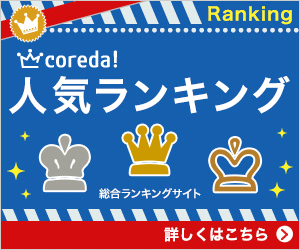

☆☆☆=======================================================☆☆☆
広告 イトーヨーカドーネット通販 ふとん
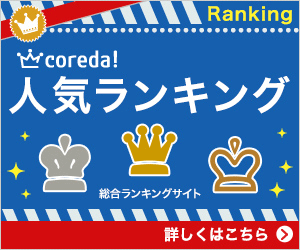

☆☆☆======================================================☆☆☆
広告 寝心地の良い掛布団


☆☆☆======================================================☆☆☆
広告 ふとんクリーナー


☆☆☆===================================================☆☆☆
広告 トレンド感のあるオリジナル家具・インテリア商品を
3000 点以上【LOWYA】


☆☆☆==============================================================☆☆☆
☆☆☆==============================================================☆☆☆





☆☆☆======================================================☆☆☆
広告 Google Ad
☆☆☆=======================================================☆☆☆
広告 Google Ad
☆☆☆=======================================================☆☆☆
広告 Google Ad
☆☆☆======================================================☆☆☆
広告
※※ ショップボップジャパン ※※
shopbop.com
ただ今セール中!!
国際エクスプレス配達(送料無料)
返品も簡単 !!
24時間カスタマサービス対応
お買い物をもっと便利に
今すぐホームページへご体験ください!
https://px.a8.net/svt/ejp?a8mat=2Z8C7Q+4QA1C2+3XGS+5YZ77
☆☆☆=======================================================☆☆☆
広告
☆☆☆=======================================================☆☆☆
広告 イトーヨーカドーネット通販 ふとん
☆☆☆======================================================☆☆☆
広告 寝心地の良い掛布団
☆☆☆======================================================☆☆☆
広告 ふとんクリーナー
☆☆☆===================================================☆☆☆
広告 トレンド感のあるオリジナル家具・インテリア商品を
3000 点以上【LOWYA】
☆☆☆==============================================================☆☆☆
☆☆☆==============================================================☆☆☆





【このカテゴリーの最新記事】
-
no image
この記事へのコメント
コメントを書く

